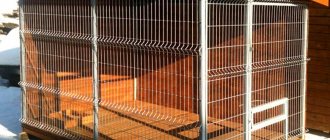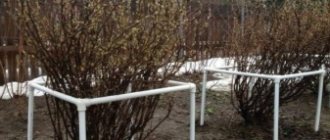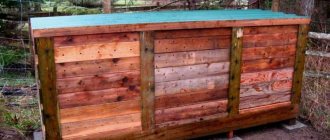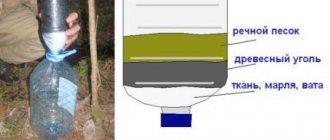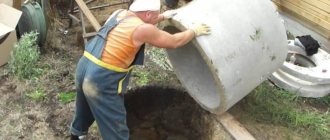Here you will learn:
- Why do you need to purify water?
- If there is no filter
- Features of homemade filters
- How to choose filter media
- Activated carbon device for dirty water purification
- Three-flask design for full-fledged water supply
- Homemade cleaning structure for a well
- How to make your own cleaning structure for a well
- Sand option for the pool
A do-it-yourself water purification filter can be made using any suitable filtration material - coal, sand, cotton wool, lutrasil. The easiest and most effective way is to use coal.
Why do you need to purify water?
Water from open sources is characterized by the following physical and chemical indicators:
- Taste – sour, salty, sweet, bitter. It comes from dissolved impurities and gases.
- Smell – hydrogen sulfide, swampy, putrid, fishy, muddy, etc. Its source is substances found in wastewater or that enter the liquid naturally.
- Turbidity and color come from organic components, particles of clay and silt, and microorganisms.
To make a simple homemade filter, you can use an Aquaphor cartridge. The price of such a filter is about 400 rubles, for this price you can filter about 200 liters of water.
In addition, water that has not passed through at least a simple water filter contains industrial and domestic wastewater, combustion products of various types of fuel, harmful chemical elements, particles of dolomite, lime, gypsum, and sand.
The Aquaphor filter is great for hiking and traveling. With this filter you can filter river or rain water. To be safe, boil the water before use.
All this can cause:
- gastrointestinal diseases;
- intoxication of the body;
- the accumulation of salts in it, which lead to diseases of the joints, bladder, the formation of gall and kidney stones, allergic reactions, and the development of iron bacteria.
In these cases, water purification, even with homemade filters, sharply reduces the likelihood of negative consequences for humans.
Installation in a water supply system
Before choosing and installing a magnetic filter for the water supply of a country house or apartment, it is recommended to do a chemical and biological analysis of the water for a complete picture of the composition and impurities. Then set the average daily consumption rate (usually about 200 liters per person).
Based on the data obtained, purchase the required size and style of the converter. It is better to entrust the insertion of the device into the system to a professional plumber.
If you install it yourself, you should follow these steps:
- Shut off the water supply system;
- Disconnect the line using a grinder or other cutting tool;
- Cut the thread to the appropriate size;
- Screw the converter, securely insulating it with paronite gaskets;
- Turn on the jet pressure to check for leaks.
The in-line magnetic filter for drinking water purification must be cleaned once a year. The invoice does not require cleaning.
If there is no filter
If you don’t have a filter at hand, but you need to somehow purify the water yourself, you can use a number of methods that will show very good results:
- Boiling. With its help you can get rid of harmful microorganisms, although a side effect is an increase in the amount of salts that fall to the bottom of the vessel.
- Settling helps get rid of volatile chlorine and other impurities. Such activities must be carried out for at least 8 hours, and after the time has elapsed, pour water carefully and do not raise sediment. It is important to wash the water container well from time to time with soap to remove any remaining harmful substances, and water, even standing water, should not be stored for more than 3 days.
- Silver. You can use a simple spoon made of this material, which should be washed well and placed in a small decanter. After water is poured into it, you only need to wait a day and you can use the purified liquid. The use of silver coins for such purposes is impractical due to impurities and small size.
- The ionizer looks like a chain with a figure at the end, which is lowered into water, where the ion exchange process occurs, and the chain itself is located on the glass. So the water should stand for some time, after which it can be drunk.
- Freezing is the simplest and most affordable way to purify water. To carry out the procedure, you need a bottle into which water is filled, but not to the very edge, screwed on with a lid and placed in the freezer. Just wait six hours and remove the bottle from the refrigerator. Once the ice has melted, you can drink the water.
- Shungite is a special stone that is placed in a carafe with water and infused. After this, the water is ready for drinking.
- The use of activated carbon in tablets , which are crushed and wrapped in gauze. You also need a plastic bottle in which you need to cut off the spout and put a layer of gauze into it, then wrapped charcoal and again a layer of gauze. The resulting homemade filter is inserted into a bottle into which you can pour water.
- Magnets. It is possible to use several identical magnets, which will ensure a uniform magnetic field in a homemade filter. In addition, it is necessary to have fittings with gaskets, from which the throughput system for water purification is constructed. The magnetic filter helps soften the water and minimize the amount of scale on the dishes.
It’s not difficult to make any of the options; the main thing is to have the right ingredients on hand and use them correctly. Although the methods are varied, they have a similar principle - it is ridding water of unnecessary and harmful components that negatively affect the human body.
You can use such a filter in an apartment, a private house, it is not difficult to find a suitable option for a summer house, so that purified and healthy water is available everywhere nearby.
Chlorination
Treatment of water with chlorine is necessary in order to clean the liquid from microorganisms, viruses and bacteria, which can cause serious diseases. The water container must be treated with chlorine for at least 30 minutes. The amount of chlorine and its derivatives is calculated in accordance with the standards regulated by the “Instructions for control of disinfection of household and drinking water”. The temperature and chemical composition of the liquid are also taken into account. At high concentrations of organic impurities, iron, manganese and hydrogen sulfide, the amount of chlorine can be increased.
Sodium hypochlorite is used to clean the well with chlorine. Tablets of this substance are placed in a special device, which simultaneously introduces calcium hypochlorite into the water. Purification is carried out not only to improve the quality of water, but also to rid the liquid of iron bacteria that clog the well and reduce the passage of water through the holes of the depth filter.
Features of homemade filters
At first glance, the water from the tap appears clean. In fact, it contains a lot of dissolved compounds. A water filter is designed to “retain” these substances: chlorine compounds, iron, etc. Their excess can lead to the development of various diseases, as well as affect the general condition of the body.
What about well water? Many people believe that it does not require cleaning, and they would be wrong. It may contain nitrates, a large number of bacteria, and pesticides (leak through the treated soil). Also, the structure of the well can be subject to corrosion. All this affects the taste and beneficial qualities of water.
It is not necessary to buy expensive store-bought devices - a homemade water filter is capable of good cleaning.
Of course, if you want crystal clear water, it is better to purchase a modern system after some time. This is due not so much to wear of parts, but to lower absorption and cleaning ability in relation to bacteria.
In home-made designs there is no function of selecting a suitable mineral composition for the equipment. And this must be taken into account to ensure the sterility of the water. For this reason, the filtrate should be boiled after each filtration process.
Water pressure also plays a huge role during cleaning. Unsuitable pressure intensity in relation to the filter system reduces performance.
It is not recommended to make a flow-type water filter with your own hands, as this is unprofitable - a ready-made stationary system is more profitable.
Disadvantages of homemade drinking water filters
All this is wonderful, but we cannot fail to mention the disadvantages of self-made filters. And they are quite significant, and they must be remembered when using drinking water after it has been purified.
- Homemade filter structures are not capable of retaining serious contaminants and infections. This factor especially applies to water purification from open reservoirs. The pores of filter materials can only retain part of the existing contaminants. However, in camping or extreme conditions, when it is necessary to obtain clean water, such filters become indispensable assistants.
- A traditional problem with any water filter, both homemade and factory-made, is contamination of the cartridge. With each water purification, the concentration of harmful microorganisms and chemicals increases. Due to the fact that self-cleaning is not provided for in such water filters, the materials that make up the backfill must be changed quite often. No other solutions for high-quality filter cleaning have yet been found.
- When tap water passes through a filter, along with pollutants, absorbent materials also retain minerals that are beneficial to humans, that is, they demineralize the water to a certain extent. Not everyone likes the taste of this water.
Review of filtration materials
The principle of operation of the filter is simple and well known to everyone. It is necessary to pass water through a layer of filtration material. The filler can be different:
- textile;
- cotton wool;
- paper napkins;
- gauze;
- sand;
- grass;
- coal;
- Lutraxil.
Filters made from gauze, cotton wool, paper napkins, fabric and other similar materials are quite effective, but short-lived. They need to be changed quite often. However, they are quite suitable as a temporary option.
You can buy charcoal in a store or make it yourself
For regular use, other materials are used, mainly charcoal. It is laid in layers, alternating with sand, gravel, grass, etc. Lutraxil is a synthetic material made from polypropylene fibers.
Tip: You can make your own charcoal. To do this, it is enough to heat the pieces of wood in a metal container. Coniferous wood is not suitable for this. Ready-made charcoal is sold in stores, in picnic departments.
How to choose filter media
When choosing a container for a filter, you need to carefully calculate everything, because the cleaning properties primarily depend on the correctly formed “filling”. The volume of the filter container must be such that it can easily accommodate all components.
Natural materials are widely used as absorbents, such as quartz river or washed quarry sand, gravel, activated carbon and zeolite. As you know, any filter begins with a primary coarse layer. Often this role is assigned to cotton-based fabric materials.
The water in the filter must undergo several stages of purification. The upper layers trap large inclusions and contaminants, the lower layers prevent the penetration of small particles.
Natural materials are very impractical from a hygiene point of view. Firstly, in a humid environment, such a filter layer is subject to rotting processes, which causes an unpleasant odor. Secondly, the structure of the fabric implies very rapid contamination of the filter with unwanted particles, which increases the need to change the layer.
Much better performance is observed in synthetic analogues. More preferable in this regard is lutrasil. The material has moisture-resistant qualities and is more resistant to contamination than cotton or bandage.
Non-woven polypropylene fabric - lutrasil can be used as a bottom layer intended for final water purification.
A completely budget option for a fabric filter can be considered a synthetic layer, which is used in making coffee.
Quartz sand does an excellent job of retaining small particles, as well as filtering heavy chemical compounds. While gravel, on the contrary, will better screen out large inclusions of unwanted materials. A mineral called zeolite has an incomparable cleansing effect.
Zeolite is widely used in water purification. It extracts heavy metals, organic compounds, phenol, nitrates, ammonium nitrogen, etc.
The active action of the substance will cope with water pollution with metal and salt suspension, and also neutralizes pesticides and other processed products of the agricultural industry.
Filter housing and layer alternation
A plastic or enamel bucket, as well as a five-liter plastic bottle can serve as a container for purified water. The volume is chosen arbitrarily and depends on the need.
The container intended to create a filter must freely accommodate all layers of absorbent materials. It is convenient to use plastic bottles of different sizes for this purpose, depending on how much clean water you plan to obtain.
Table of materials used to create a water filter at home:
| The lowest layer is usually created from woven or non-woven material - it can be gauze, fabric, cotton wool or artificial material, for example, lutrasil (agro-fabric). Natural materials, when exposed to moisture, begin to rot over time and emit unpleasant odors. Therefore, they are not so well suited for long-term installation in water filters. The best option for the bottom layer would be lutrasil - you won’t need much of it, and the cost of the material is low. In any case, the lower fabric layer collects microscopic particles suspended in the water that the higher filter layers could not retain. |
| Charcoal is used to purify water from chlorine, pesticides, organic substances, nitrogen and other dangerous chemical elements and compounds. The efficiency of adsorption of this material is achieved due to the porous structure of coal. Factory-made material has optimal porosity for filtration. Homemade carbon has lower porosity but can also be used in a filter. Charred pits of apricots, plums and peaches, as well as coconut shells, perfectly adsorb contaminants. |
| Quartz sand is used for mechanical purification of water from various contaminants of small and large fractions, clay and soil impurities. It is quartz sand that is best suited for water filtration, as it is distinguished by its purity and suitable grain shape. Polygonal particles stick together less when wet, which is very important for filtration. At the same time, the fine sand fraction improves the quality of water purification. |
| Pebbles (gravel) of small and medium fractions are intended to act as a barrier for large inclusions that fall into the water. This backfill layer is most often used in filters for purifying water from open sources or long-uncleaned wells, which may contain a lot of large organic matter. |
| Zeolite is a mineral of volcanic origin that has a considerable number of useful properties. One of the areas of application of this stone is water purification, where it is used as a sorbent. The mineral actively absorbs and retains for a long time harmful compounds and individual substances, which include heavy metals (zinc, lead, chromium, strontium), as well as nitrates, radionuclides, ammonium salts, and various petroleum products. At the same time, the stone carries out the process of dehydration, that is, it releases purified water. In addition, zeolite softens water, increasing its pH. This water is good for human health, it normalizes the alkaline balance and neutralizes free radicals. Based on this mineral, the well-known medical drug “Smecta” is produced, prescribed when it is necessary to remove toxins from food poisoning, as well as when receiving various doses of radiation. |
| Silver has a bactericidal effect, so it is often also used for water purification at the final stage. To obtain silver water, the best metal is 999 fine. This cleaning method can also be used for regular tap water. However, we must not forget that drinking such water in large quantities is still not recommended. |
The layers in the filter can be made of different materials, that is, one of them can be replaced with another. For example, instead of charcoal, zeolite can be used; it will cope with the task no worse than the first. Purification of water with silver is optional and can be used at the request of the user.
If water taken from an open reservoir or a contaminated well is being purified, then after this process, before use, it must be boiled.
Principle of operation
Activated carbon is produced by special processing of carbon-containing raw materials (roasting without access of air + steaming + treatment with reagents), as a result of which it is possible to achieve the formation of a huge number of tiny pores with a radius from 0.2 to 200 nm.
At the same time, the surface area that interacts with pollutants increases millions of times: for example, in 1 g of activated carbon it can range from 500 to 2200 square meters. m.
Such a material acquires adsorption properties, that is, the ability to capture and retain large amounts of impurities due to attraction between molecules.
The pollutants that activated carbon deals with are organic in nature. These are various petroleum products, benzene, phenol, polycyclic aromatic hydrocarbons, phosphorus and organochlorine pesticides. In addition, it removes active chlorine molecules from water (dechlorination).
Activated carbon device for dirty water purification
Coal will help remove contaminants of organic and inorganic origin, as well as ozonate and eliminate water chlorination products.
As a filler in a homemade carbon-based filter, a product washed with alkalis or acids (activated) or regenerated is used.
If you purchase coal with a silver coating, you will get a product that has bactericidal properties. Without such treatment, microorganisms and bacteria are able to penetrate the filter device.
Used coal can be restored 3-4 times as follows:
- rinse with running water 2-3 times, placing it in an enamel bowl;
- Let it sit for 2-3 hours;
- dissolve soda (3% bicarbonate) in 3 liters of water and pour the composition over the regenerated product;
- Boil the mixture for half an hour;
- strain after draining and rinsing.
When manufacturing a cleaning system, you need to consider:
- water pressure;
- liquid temperature (boiling water cannot be filtered);
- absence of nearby heating sources, which can lead to loss of sorbent properties.
Activated carbon is characterized by a porous structure, due to which purification occurs. Both powder and granular materials are suitable for this.
The quality of the resulting water depends on the thickness of the layer. The speed of passage of liquid through the filter is selected so as to ensure the required contact time between the liquid and the carbon for cleaning. 100 g of product can reliably neutralize 200 ml of water in 1 minute.
Small-sized camping varieties
A small filter for purifying water from toxic substances and mineral formations, which you can take with you when going outdoors, hunting or fishing, is easy to make. The product will remove the effects of microorganisms, rid the liquid of unpleasant odor and taste, and make the drink transparent.
It is important to choose the right mineral structure. A good level of cleaning in a portable device will be provided by medium-sized granules - large ones will let contaminants through, and small particles of powder will seep into the liquid.
Make a hole in the cigar case and fill it with filter elements. We fill the case like this: two cm of cotton wool at the very bottom, then an eight cm layer of ground activated carbon, then a 2 cm layer of cotton wool. All layers are clamped with a plate of water-permeable porous plastic, which is used in industrial water filters.
For homemade devices, it is better to take coal from birch and other deciduous trees. Needles can give water a specific smell. It’s easy to prepare the material yourself. You need to heat pieces of wood red-hot in a stove or over a fire in a metal container and cool them.
If the need for filtration arose unexpectedly, then the coals and ash left over from the fire are suitable as a filler. Combustion products are loaded into a plastic bottle or any other suitable container and liquid is passed through them.
Making a carbon water purifier
The carbon water filter can be assembled in a more suitable housing.
To do this you need to prepare:
- A cartridge whose base is made from several food containers or plastic bottles.
- Suitable tools are a screwdriver or an awl, a knife, scissors.
- The filler is charcoal, prepared independently or purchased in advance.
- Granulates that can further improve the quality of drinking liquid are gravel and quartz sand.
- Plugs or covers made of plastic.
- Gauze, bandage or cloth to perform initial rough cleaning of large debris.
Use electrical tape or silicone glue to strengthen the joints of the device. For ease of use, a homemade device can be suspended by threading a cord or wire through holes made in a plastic bottle with the bottom cut off. A cap that can be unscrewed a few turns to allow water to flow is suitable as a tap.
To facilitate subsequent replacement of the filler, a fabric cover is often used. Then the filter layers are laid. Gravel and pebbles are placed last. First - coal and sand. You can place cotton wool at the neck as a fine filter.
The main disadvantage of such systems is the slow filtration process.
Useful homemade PVC pipe
Homemade filters for water purification, which can compete with industrially produced products, can be made for a country house or cottage. If the water supply is supplied from a lake, pond, river, a well is drilled or a shaft well is made, the installation of filtering devices is necessary.
Cleaning devices are made using improvised means. Will need:
- 2 containers;
- part of the water pipe made of plastic – 50-80 cm;
- plastic bottle caps;
- cotton wool;
- filler;
- tools.
The procedure for making a water filter from PVC pipe.
- A cover is glued into the PVC pipe, in which several holes are made. It will act as a mesh backing when laying cotton wool and gauze as the primary layers of the filter.
- Place a layer of padding polyester and lay another cover without glue.
- The neck, cut off from the bottle, is attached to the pipe with the thread facing outward. Wrap with electrical tape.
- A lid with a fabric gasket is attached to the other end.
- The pipe is filled with activated carbon.
- The segments are connected using threads and plastic bottles are placed on both sides.
Service life and operating features of a homemade carbon filter
The more dissolved substances there are in the water, the shorter the device will last (this applies to both homemade and purchased filters). As already mentioned, soaked coal is a breeding ground for bacteria. Thus, the service life of this material is not long in any case. On average, you need to add a new portion every 3 days. But this is only if the water quality has not deteriorated.
An important point: when using charcoal, the water must be drained after the first filtration. If coconut shell charcoal is used as a filler, this is not necessary - it is completely safe.
Internal fitting
Making an external filter for an aquarium is much more difficult than making an internal one. This is due to the fact that the latter is simpler in structure, so even a novice aquarist can make it. To make the device you will need:
- plastic bottle with a capacity of no more than 0.5 liters;
- padding polyester;
- a plastic pipe whose diameter is equal to the neck of the bottle;
- hose and compressor;
- pebbles
Follow the filter manufacturing instructions.
The latter will be used as a filler. Step-by-step master class on making a filtration system:
- Divide the bottle into two parts so that one is larger than the other. The smaller part should have a neck. Point the bowl upside down and apply enough force to get a tight structure.
- Make holes on the outside of the circle for water to pass through. Their diameters should be 3−4 mm. The optimal placement option is 2 rows of 6 holes.
- Pass the pipe through the neck of the bowl so that there are no gaps between them.
- Make the pipe long enough to be located above the surface. The structure itself should not be at the bottom, preventing the flow of liquid.
- Pour a layer of gravel onto the bowl, and then lay out the padding polyester. Install the hose into the tube and secure it. Place the structure inside the aquarium. After turning on the compressor, the device will start working. After a little time, live bacteria will begin to appear in the device, which are necessary for the breakdown of ammonia into nitrates.
The principle of operation of the filter is as follows: air bubbles entering the pipe move upward and then attract water flows. The air-saturated liquid enters the top layer of gravel, then moves downwards, ending up in the aquarium. Cleaning is carried out by a layer of padding polyester, which prevents silt from settling on the gravel.
Three-flask design for full-fledged water supply
Happy owners of a full-fledged water supply in a private house can make a three-flask homemade filter for water purification. To do this you need:
- Buy three identical flasks.
- Connect the flasks in series with two quarter-inch nipple adapters. In this case, it is necessary to strictly adhere to the in/out designations in order to maintain the direction of water movement. Nipple threads should be sealed with FUM tape.
- The outermost holes of the flasks are connected to the quarter-inch tube using straight adapters.
- Connect the filtration system to the water supply with a tee, which is cut into the water supply using a 1/2” connector.
- At the outlet, a standard drinking water tap is connected to the filter system.
- Fill the flasks with filter material. You can use a polypropylene cartridge, carbon filter and anti-scale filler.
Filter cartridges are very diverse and allow you to eliminate a wide variety of water contaminants. It is worth noting that the cost of such a DIY design may not be much lower than an inexpensive filtration unit from the manufacturer.
Kinds
Typically, a magnetic filter is assembled from a metal pipe:
- brass,
- bronze,
- copper,
- stainless steel
A tube of smaller diameter is inserted inside it, in which strong neodymium magnets are located. Typically the tube is made of propylene, which can withstand heating up to 90 degrees. The entire structure is installed in the pipeline section.
The devices are:
- Flanged - for water mains greater than two inches in diameter. They are fastened with bolts or studs, which makes it easy to remove the equipment for maintenance without dismantling the main line.
- Couplings - are connected to the water supply using two internal couplings.
differ in setting parameters:
- Diameter.
- Temperature range.
- Bandwidth.
- Maximum permissible pressure.
All indicators are indicated on the label when sold in retail stores.
There are also overhead magnets, they come as a set - two magnets, a clamp and bolts for connecting to pipes.
Important! The disadvantage of the overhead option is that it cannot be installed on metal; you will have to cut out part of the line and replace it with plastic.
Homemade cleaning structure for a well
If you have a well in your dacha, you need to take care of filtering the liquid. Pesticides, nitrates, and other harmful impurities seep through the ground. They enter the consumed water and then into the human body. Well cleaning systems are expensive; for a small dacha, making a bottom water filter with your own hands is more reliable.
Prepare for work:
- ordinary river pebbles;
- crushed stone (it is strictly forbidden to use construction stone);
- shungite;
- zeolite (effective against viruses, bacteria);
- gravel.
A shield for the well is made from boards, wrapped in geotextile, then lowered to the very bottom. Large stones are also placed there at the first stage. After this, you can proceed to making a filter (reverse, direct).
If the bottom of a country well “sparkles” with soft clay, a direct filter is needed. First, a fraction of a larger diameter is laid, then a smaller one. It is necessary to adhere to the optimal thickness of each layer. The average is 15-20 cm. The minimum number of layers is 3. First, crushed stone is laid, then small pebbles, and lastly, thoroughly washed river sand.
A reverse system is suitable for a country well with a sandy bottom. Initially the small fraction is laid, then the larger one. It is necessary to adhere to the same layer rules as in the previous case.
Over time, the filter will become clogged with sand, clay particles, and other impurities. It must be “updated” annually. The sand is replaced, the stones are washed well, and then laid back.
How to make your own cleaning structure for a well
How to make a water filter with your own hands for a well? The cleaning system is simpler than it might seem.
The following materials and tools are prepared:
- durable plastic pipe;
- wood plug;
- mesh with the smallest holes (cells), preferably brass;
- drill, drill.
Important! The length of the pipe is calculated individually based on the depth of the well. The diameter is taken less than the diameter of the well.
How to make a water filter: process description
- Initially, the total length of the sump is measured.
- At an angle of up to 60 degrees (minimum 35), it is necessary to drill small holes in a checkerboard pattern, leaving a minimum distance of 2 cm between them.
- The pipe is thoroughly cleaned of any remaining chips, the area “with holes” (25% of the total length) is wrapped and secured with rivets.
- A plug (plug) is installed.
Passing through the mesh, small particles of dirt and sand will be retained. Larger impurities settle in the settling tank. Water that has undergone such filtration must be additionally boiled before use, since the purification system does not remove harmful substances (germs, bacteria).
Catalytic method
This method is based on the use of chemically active reagents that react with metals contained in the water column, forming complex water-insoluble compounds. The installation is presented in the form of various types of filters for cleaning wells from iron, which have an internal porous structure impregnated with the necessary reagents.
One of the most common synthetic minerals for catalytic purification is Birm. This porous substance easily removes iron and other metals from water. The use of this mineral together with chlorination technology is unacceptable, since the material begins to lose its properties upon contact with chlorine.
Dampher is a mineral that contains particles of copper and silver, which enhance the catalytic properties of the material. The substance thoroughly cleans the liquid from metals. MFO-47 is another novelty in the production of catalytic sorbents. To produce this substance, quartz sand, dolomite and expanded clay are used. Filters for water from iron wells not only deal with metals, but also disinfect the liquid, killing bacteria and microorganisms.
Sand option for the pool
Before you make a water filter with your own hands, you need to decide on the volume of liquid that needs to be cleaned. If the displacement is small, then home-made devices with sand filling are suitable.
Any container of suitable size can perform the functions of a cartridge. Liquid supply and outlet pipes are inserted into it and sand or other filler is placed. A PVC corner is useful for turning the pipe.
For efficient cleaning, several containers can be connected together using an M10 threaded sleeve. A compressor is connected to the system, the power of which is calculated depending on the volume of the pool.
What mistakes are made
Creating a filter for a well with your own hands is a very complex and lengthy process. It is possible that many people with insufficient experience may make one mistake or another. Each of them can become a decisive factor in the reliability and efficiency of the entire structure.
Do-it-yourself well
Among the most common mistakes, two main ones can be distinguished.
- Incorrect calculation data. Quite often, a mistake is made such as the pipe diameter being measured incorrectly. At this stage you need to be very careful, since even the slightest deviation can have the most serious consequences. The pipe simply will not fit into the borehole.
- The holes cut in the pipe are too small. This is wrong because such small holes get clogged very quickly.
In fact, there are too many errors, but if you describe them all, then no sheet will be enough.



